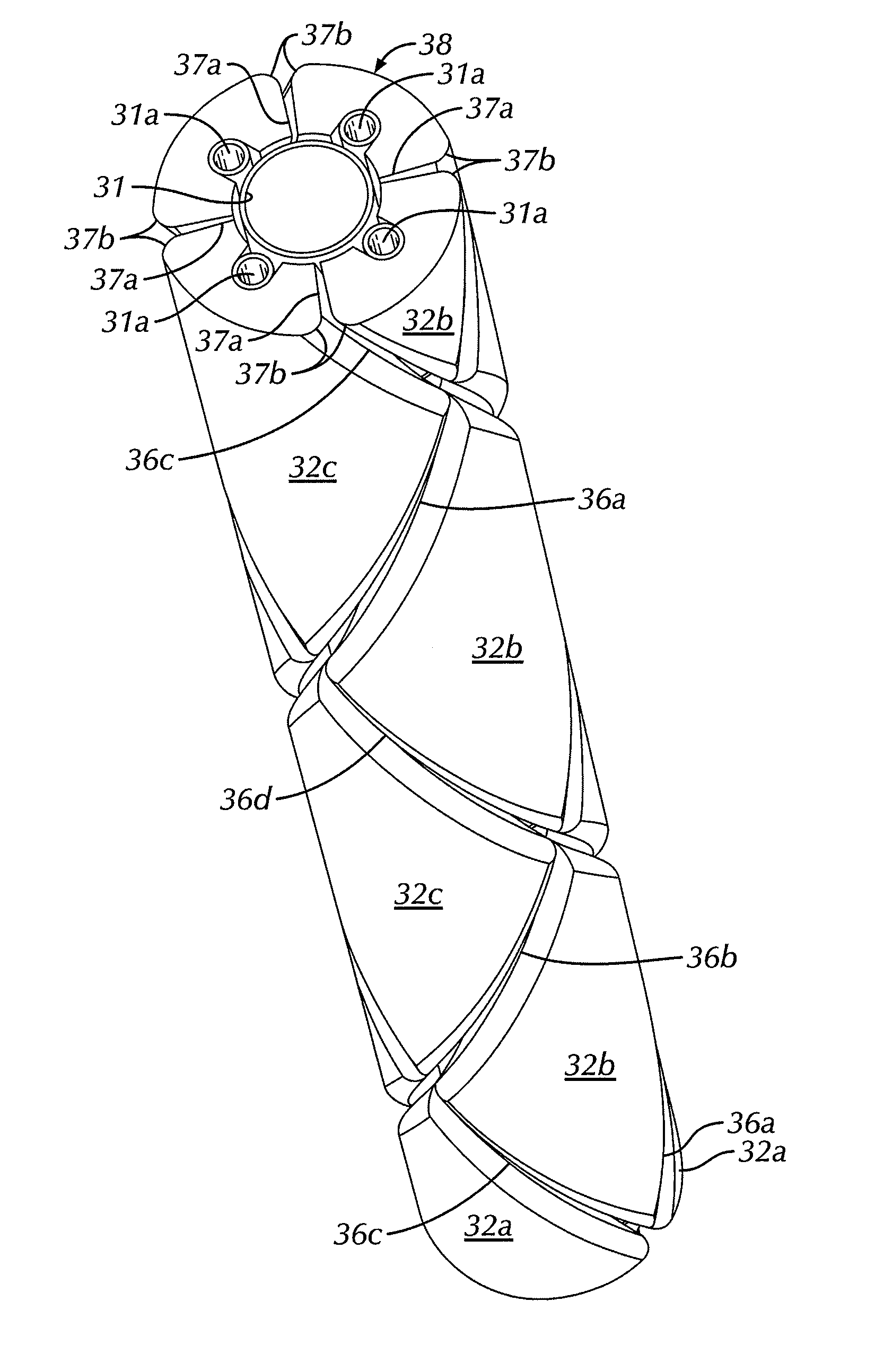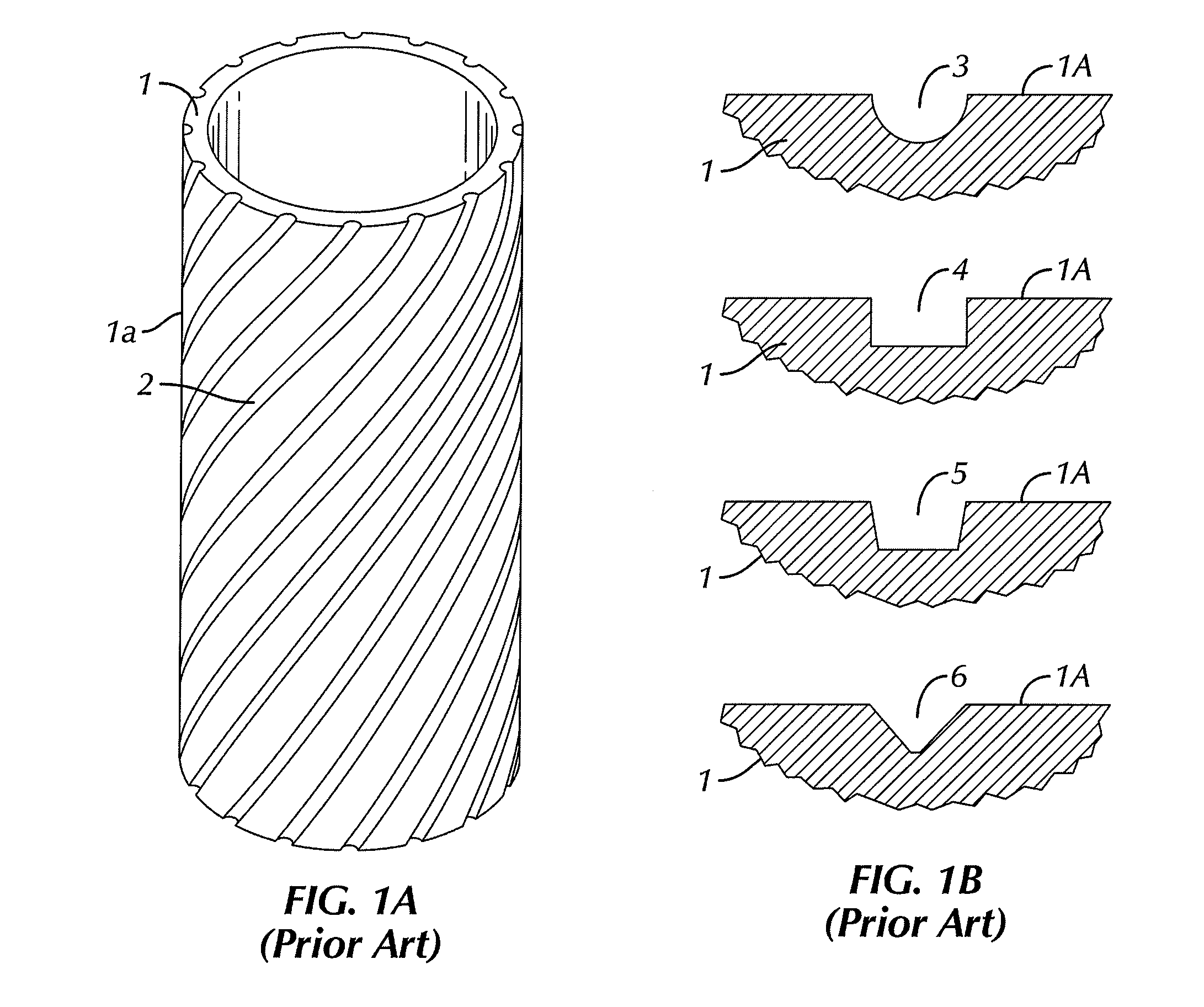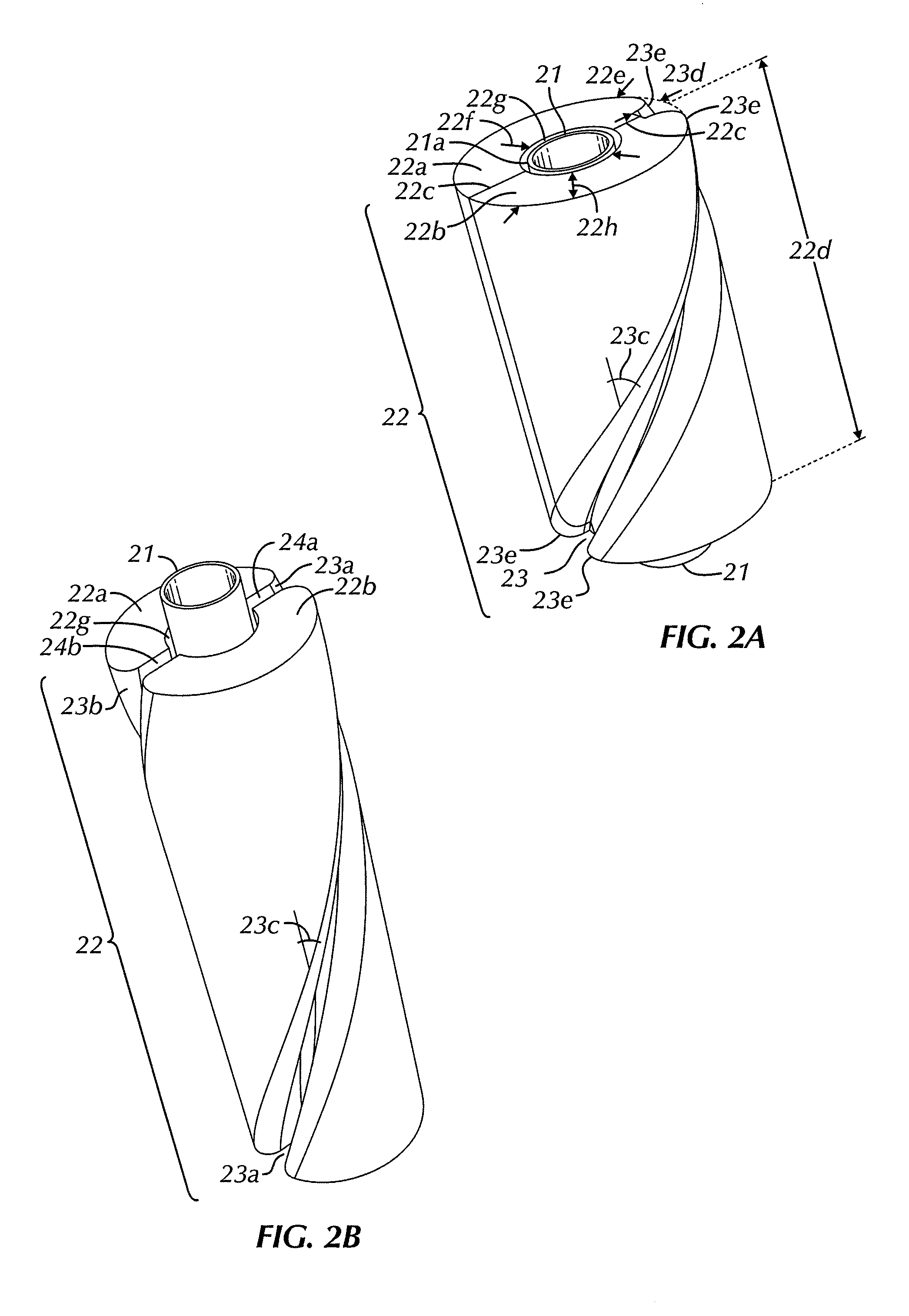Riser floatation with Anti-vibration strakes
a technology of riser and floatation, which is applied in the direction of sealing/packing, other domestic objects, and wellbore/well accessories. it can solve the problems of increasing the load of riser tensioning equipment, increasing the load of mooring equipment, and increasing the energy cost of dynamic positioning
- Summary
- Abstract
- Description
- Claims
- Application Information
AI Technical Summary
Problems solved by technology
Method used
Image
Examples
Embodiment Construction
[0035]Embodiments of the present disclosure relate to marine riser buoyancy modules configured to reduce vortex-induced vibration. For the purposes of the current disclosure, a buoyancy element is a discrete unit of buoyancy for a marine riser which does not encompass the full circumference of the riser, and a buoyancy module is an assembly of buoyancy elements which encompasses the full circumference of the riser, and which may have squared-off distal ends, that is, distal ends described by a plane perpendicular to the longitudinal axis of the riser.
[0036]Prior art buoyancy modules for marine drilling risers, for example, comprise two “clamshell” buoyancy elements with squared-off distal ends, that is, which are described by a plane perpendicular to the longitudinal axis of the riser. A 75 foot long marine drilling riser of the prior art will commonly be fitted with five buoyancy modules, each of which is about 14 feet long. Embodiments according to the current disclosure may inclu...
PUM
 Login to View More
Login to View More Abstract
Description
Claims
Application Information
 Login to View More
Login to View More - R&D
- Intellectual Property
- Life Sciences
- Materials
- Tech Scout
- Unparalleled Data Quality
- Higher Quality Content
- 60% Fewer Hallucinations
Browse by: Latest US Patents, China's latest patents, Technical Efficacy Thesaurus, Application Domain, Technology Topic, Popular Technical Reports.
© 2025 PatSnap. All rights reserved.Legal|Privacy policy|Modern Slavery Act Transparency Statement|Sitemap|About US| Contact US: help@patsnap.com



